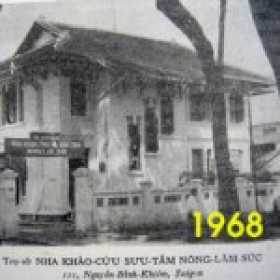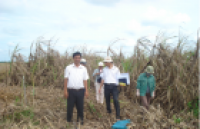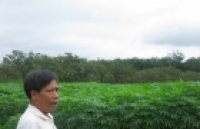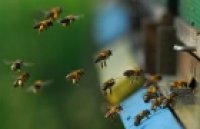| Arabidopsis DET1 degrades HFR1 but stabilizes PIF1 to precisely regulate seed germination |
|
How organisms respond to environment changes is a fundamental and intriguing question in biology. Light is the energy resource and a crucial environmental cue for plant major developmental switches, such as seed germination. Studying the underlying mechanism is important for us to understand the basic principles of plant development and improve crop productions. Here we identify DET1 as a novel central repressor of seed germination. We further reveal that seeds use a multilevel regulatory circuit of triple feed-forward loops to sensitively and precisely mediate light-regulated germination. |
|
Hui Shia,b,1, Xin Wanga,c,1, Xiaorong Mob, Chao Tanga,c, Shangwei Zhonga,b,2, and Xing Wang Denga,b,2 SignificanceHow organisms respond to environment changes is a fundamental and intriguing question in biology. Light is the energy resource and a crucial environmental cue for plant major developmental switches, such as seed germination. Studying the underlying mechanism is important for us to understand the basic principles of plant development and improve crop productions. Here we identify DET1 as a novel central repressor of seed germination. We further reveal that seeds use a multilevel regulatory circuit of triple feed-forward loops to sensitively and precisely mediate light-regulated germination. This study provides a comprehensive framework of how light regulates seed germination. AbstractSeed is an essential propagation organ and a critical strategy adopted by terrestrial flowering plants to colonize the land. The ability of seeds to accurately respond to light is vital for plant survival. However, the underlying mechanism is largely unknown. In this study, we reveal a circuit of triple feed-forward loops adopted by Arabidopsis seeds to exclusively repress germination in dark conditions and precisely initiate germination under diverse light conditions. We identify that de-etiolated 1 (DET1), an evolutionarily conserved protein, is a central repressor of light-induced seed germination. Genetic analysis demonstrates that DET1 functions upstream of long hypocotyl in far-red 1 (HFR1) and phytochrome interacting factor 1 (PIF1), the key positive and negative transcription regulators in seed germination. We further find that DET1 and constitutive photomorphogenic 10 (COP10) target HFR1 for protein degradation by assembling a COP10–DET1–damaged DNA binding protein 1–cullin4 E3 ligase complex. Moreover, DET1 and COP10 directly interact with and promote the protein stability of PIF1. Computational modeling reveals that phytochrome B (phyB)–DET1–HFR1–PIF1 and phyB–DET1–Protease–PIF1 are new signaling pathways, independent of the previously identified phyB-PIF1 pathway, respectively mediating the rapid and time-lapse responses to light irradiation. The model-simulated results are highly consistent with their experimental validations, suggesting that our mathematical model captures the essence of Arabidopsis seed germination networks. Taken together, this study provides a comprehensive molecular framework for light-regulated seed germination, improving our understanding of how plants respond to changeable environments.
See: http://www.pnas.org/content/112/12/3817.abstract.html?etoc PNAS March 24, 2015 vol. 112 no. 12 3817-3822
Fig. 3. DET1 and COP10 promote HFR1 protein degradation. (A and B) Fluorescence microscopic analysis of the HFR1-GFP levels in the imbibed seeds (A) or etiolated seedlings (B) of transgenic plants expressing HFR1-GFP in hfr1-201 (control), det1hfr1 (det1), and cop10hfr1 (cop10) backgrounds. In A, Top diagrams indicate the light irradiation treatments used in the experiment. After 4 h dark incubation, the seed coats were removed and the photographs were taken under a fluorescence microscope. In B, the seedlings were grown in the dark for 4 d, and the HFR1-GFP accumulation in the root cells was examined. (Scale bar, 100 µm.) (C) Immunoblot analysis of the protein levels of HFR1-GFP. The seedlings were grown in the dark for 4 d without (WL0h) or with an additional 2 h of white light irradiation (WL2h). Star indicates the possibly modified higher band of HFR1-GFP proteins. Col-0 was used as a negative control, and anti-RPT5 was used as a sample loading control. |
|
|
|
[ Tin tức liên quan ]___________________________________________________
|


 Curently online :
Curently online :
 Total visitors :
Total visitors :
(14).png)


